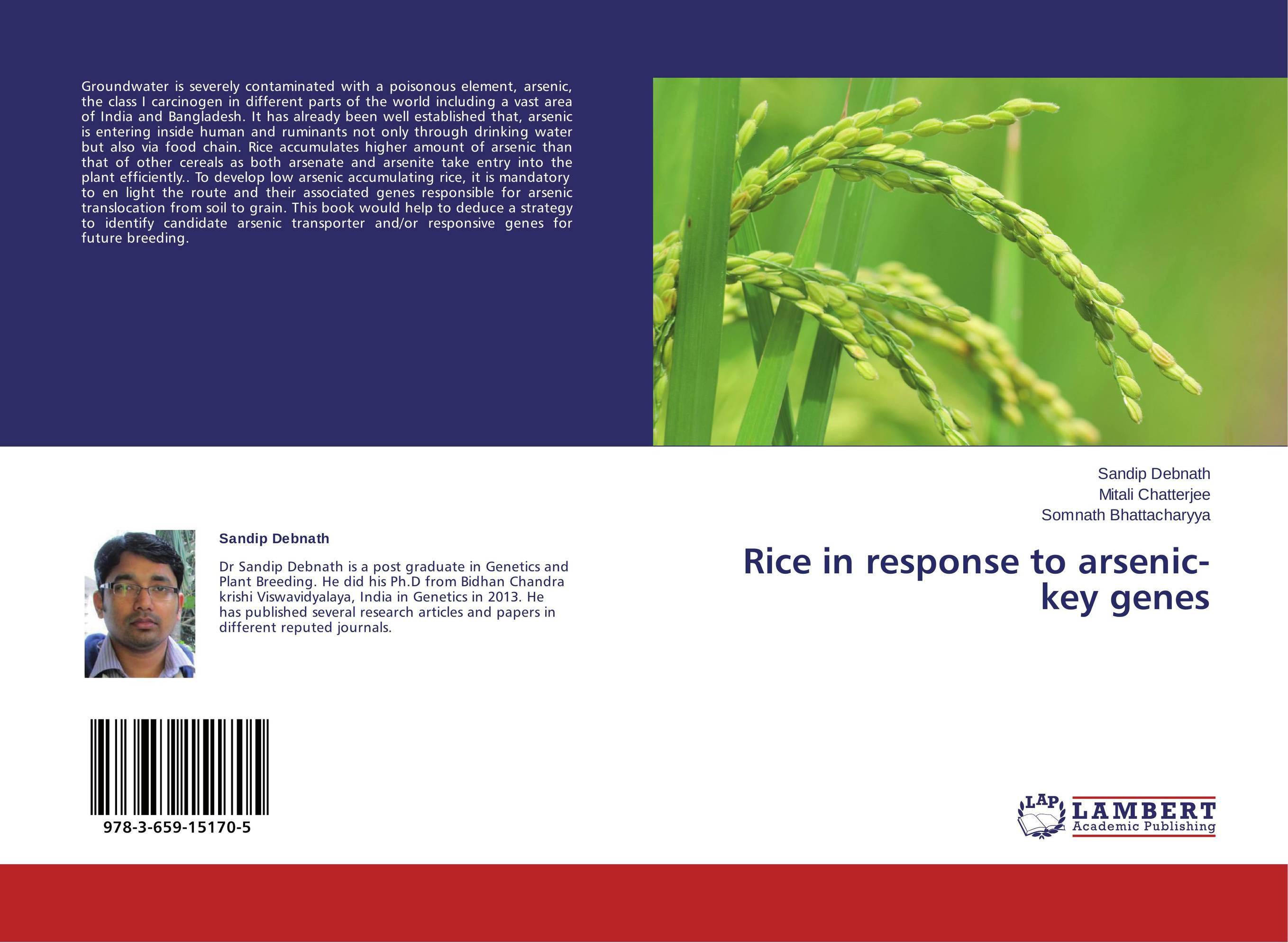| Поиск по каталогу |
|
(строгое соответствие)
|
- Профессиональная
- Научно-популярная
- Художественная
- Публицистика
- Детская
- Искусство
- Хобби, семья, дом
- Спорт
- Путеводители
- Блокноты, тетради, открытки
Rice in response to arsenic-key genes.

В наличии
| Местонахождение: Алматы | Состояние экземпляра: новый |

Бумажная
версия
версия
Автор: Sandip Debnath,Mitali Chatterjee and Somnath Bhattacharyya
ISBN: 9783659151705
Год издания: 2013
Формат книги: 60×90/16 (145×215 мм)
Количество страниц: 68
Издательство: LAP LAMBERT Academic Publishing
Цена: 25266 тг
Положить в корзину
Позиции в рубрикаторе
Отрасли экономики:Код товара: 113426
| Способы доставки в город Алматы * комплектация (срок до отгрузки) не более 2 рабочих дней |
| Самовывоз из города Алматы (пункты самовывоза партнёра CDEK) |
| Курьерская доставка CDEK из города Москва |
| Доставка Почтой России из города Москва |
Аннотация: Groundwater is severely contaminated with a poisonous element, arsenic, the class I carcinogen in different parts of the world including a vast area of India and Bangladesh. It has already been well established that, arsenic is entering inside human and ruminants not only through drinking water but also via food chain. Rice accumulates higher amount of arsenic than that of other cereals as both arsenate and arsenite take entry into the plant efficiently.. To develop low arsenic accumulating rice, it is mandatory to en light the route and their associated genes responsible for arsenic translocation from soil to grain. This book would help to deduce a strategy to identify candidate arsenic transporter and/or responsive genes for future breeding.
Ключевые слова: Food Chain, arsenic, mitigation, genes, Rice, Transporter



